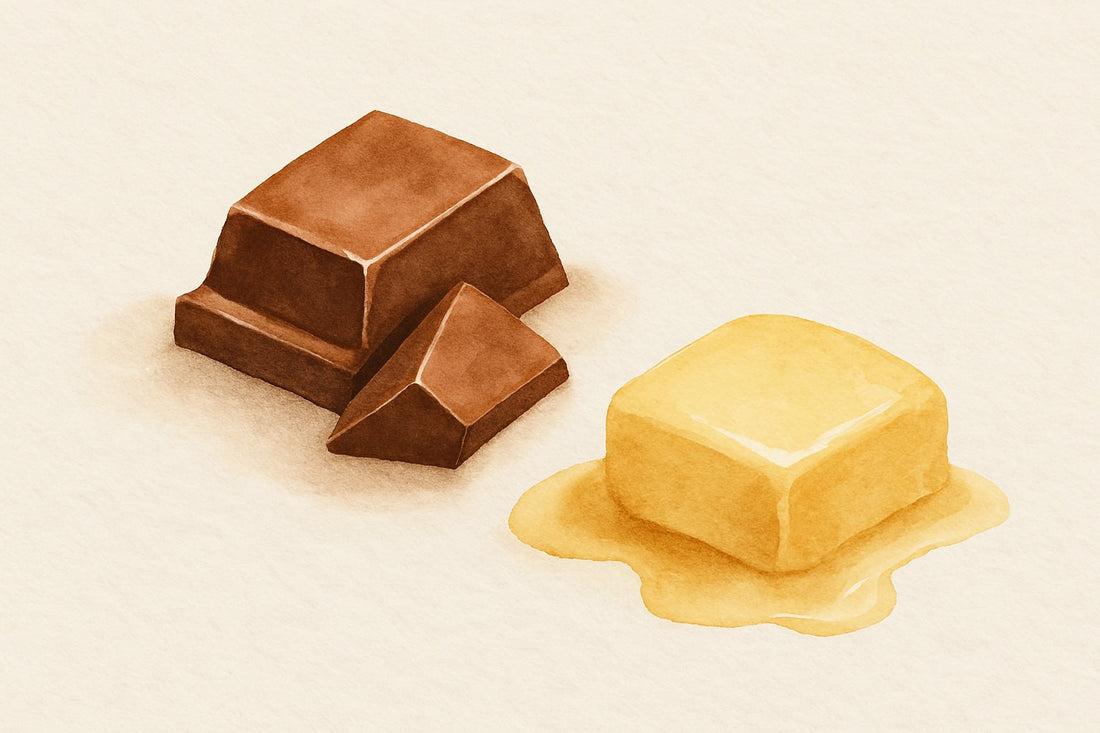
Melt-in-Your-Mouth: Luxury or Just Ultra-Processed Trickery?
Share
Think of your favorite indulgent foods —
Chocolate truffles. Cheese puffs. Ice cream. Soft cakes. Buttery biscuits.
What do they all have in common?
They melt in your mouth. And that’s part of what makes them so irresistible.
But here’s the twist:
In nature, almost nothing melts in your mouth.
So if it doesn’t happen naturally, why do we crave it so much?
Let’s explore the truth behind one of the food world’s most seductive sensations — and why “melty” might not always be a good thing.
🍦 What Does “Melt-in-Your-Mouth” Actually Mean?
It’s a texture. A food that dissolves quickly, needs no chewing, and feels effortless in your mouth.
It’s soft. Smooth. Creamy. Airy. Dissolvable. Instant.
The result?
You eat more. Faster. With fewer signals to slow you down.
And that’s not an accident.
🧪 The Science of Melty Food
Manufacturers use specific techniques to create “melt-in-your-mouth” foods:
- High fat + sugar blends that soften instantly at body temperature
- Air whipping (like in mousses or chips) to reduce density
- Emulsifiers and stabilisers to create ultra-smooth textures
- Refined carbs stripped of structure so they dissolve fast
These are engineered textures, designed to bypass chewing, delay fullness signals, and keep you reaching for more.
Your brain says “satisfying,”
but your body doesn’t say “enough” — at least not quickly enough.
🌾 Why Nature Doesn’t Melt in Your Mouth
Whole foods have:
- Fiber
- Texture
- Water content
- Structure
They’re designed to slow you down — to be chewed, digested gradually, and absorbed over time.
Take a raw almond vs a chocolate-coated almond.
Or a banana vs a banana smoothie with sugar and cream.
Same base ingredient — wildly different body responses.
In nature, food that melts instantly doesn’t exist. It’s always attached to work (chewing) and time (digestion).
So when something melts in your mouth?
That’s almost always a sign of heavy processing.
⚠️ Melt = Overeating Danger Zone
You know that feeling when you’ve eaten a bag of chips and think,
“Wait… I wasn’t even hungry”?
Here’s why:
- No chewing = no slowing down
- No fiber = no fullness
- Fast oral pleasure = instant dopamine + delayed satiety
This combo creates the perfect storm for overeating without satisfaction — which is exactly what ultra-processed foods are built to do.
🍽️ The Difference Between Soft and Melty
Let’s be clear — soft doesn’t mean bad.
- Cooked dal? Soft, nourishing, fibrous
- Ripe mango? Soft, sweet, but filled with fiber and water
- Boiled potatoes? Soft, whole, filling
These foods break down slowly, even if they start soft.
“Melt-in-your-mouth” processed foods? They vanish — nutritionally and physically — in seconds.
📌 So Why Do We Love That Feeling?
Because it feels like comfort. Effortless. Luxurious.
Your brain associates it with:
- Childhood treats
- High-end desserts
- “Treat yourself” moments
- Instant gratification
And to be fair — sometimes, it’s okay to enjoy those moments!
But recognizing what’s behind the sensation gives you back the power to make more mindful choices.
🧠 Truth or Trend?
🍫 Trend: Melt-in-your-mouth = premium quality
🧠 Truth: It’s usually a sign of ultra-processing designed to keep you eating
✅ Takeaway: If it disappears too fast to chew, it’s probably not nourishing
❓ FAQ: The Melt-in-Your-Mouth Myth
❓ Are all melt-in-your-mouth foods bad?
Answer:
Not necessarily. Occasional indulgences are fine. But if your daily diet includes mostly “melty” foods, you might be missing out on fibre, protein, and real satisfaction.
❓ Is it true that melt-in-your-mouth foods make you overeat?
Answer:
Yes. Foods that require little to no chewing bypass natural satiety signals. You eat more before your body has time to say, “I’m full.”
❓ Are there natural alternatives to melt-in-your-mouth cravings?
Answer:
Absolutely! Try:
- Ripe fruits (banana, mango)
- Roasted vegetables with olive oil
- Homemade nut butters
- Light dals or soups with texture
These offer softness without over-processing.
❓ Why are chips and chocolate so addictive?
Answer:
They hit the jackpot: melt-in-your-mouth texture, salt/sugar/fat balance, and fast brain reward. That’s why we reach for “just one more.”
❓ Should I avoid melt-in-your-mouth foods completely?
Answer:
No need to fear them — just notice them. Recognise when a texture is designed to override your instincts, and balance it with whole foods that slow you down and nourish you.
Final Word
Melt-in-your-mouth might feel magical.
But it’s often a marketing illusion, not a nutritional win.
True nourishment takes time. Chewing. Texture. Slowness.
Nature didn’t design food to melt — and maybe that’s exactly why it works.


